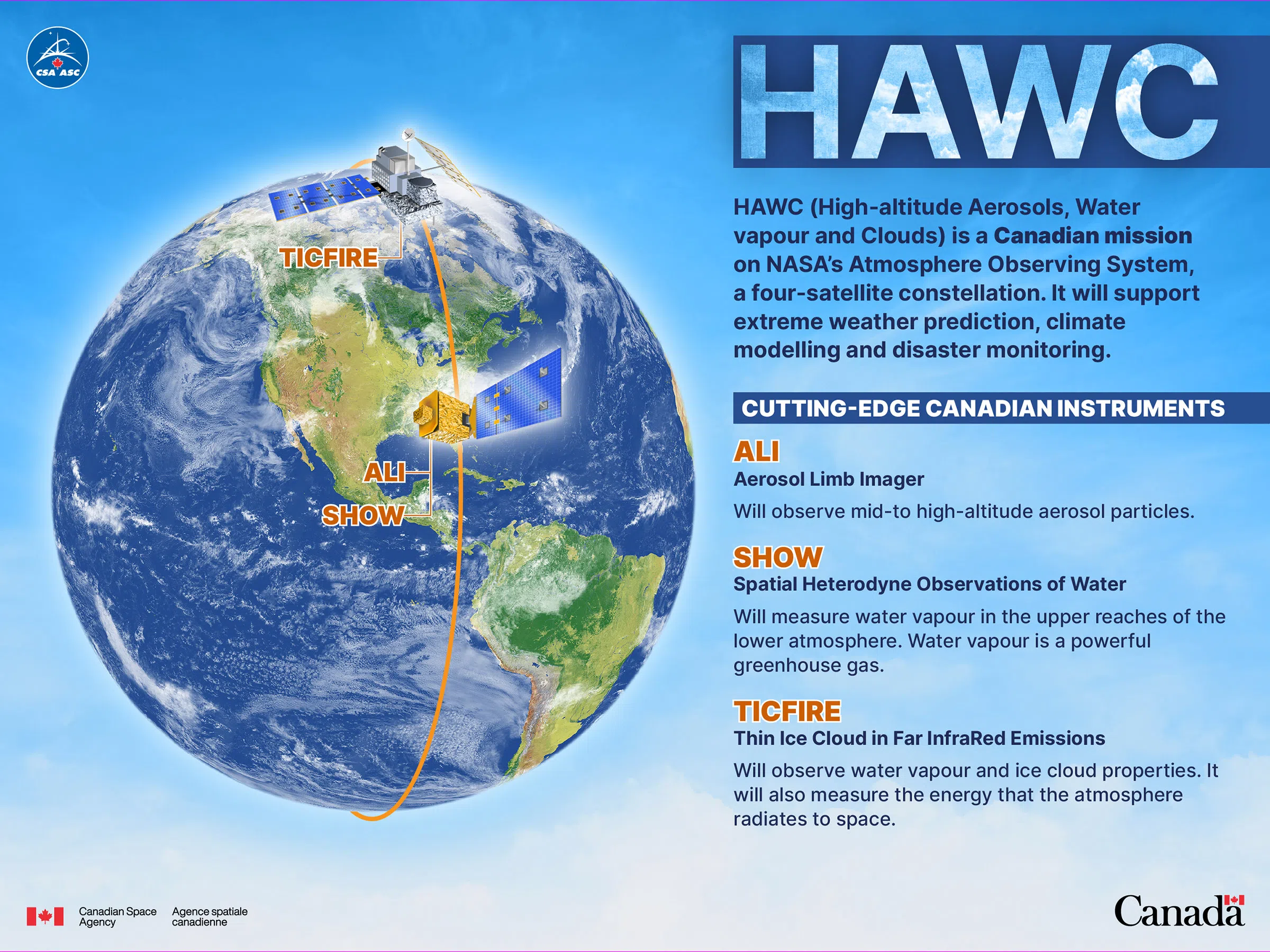The University of Saskatchewan is receiving funding from the province to support a project with ties to both the Canadian Space Agency and NASA. The $600,000 in funding over three years is for the HAWC, or High-altitude Aerosol, Water vapour and Cloud, satellite mission. This mission is the Canadian Space Agency’s contribution to an Atmosphere Observing System mission led by NASA, which is expected to launch two satellites in 2031.

graphic from Canadian Space Agency
One of the two project leaders from USask, Dr. Doug Degenstein from the College of Engineering and Engineering Physics, explains that two of the three cutting-edge climate science satellite instruments on these satellites are designed by the University of Saskatchewan team. USask is the lead institution of 14 working on the HAWC satellite mission, along with the Canadian Space Agency, Environment and Climate Change Canada and the National Research Council of Canada.
It’s about developing equipment which will deliver critical measurements to support extreme weather prediction, climate modelling, disaster modelling and climate change. As an example, Degenstein explains that when it comes to forest fires, “We will be measuring atmospheric properties which will allow us to better predict where forest fire smoke ends up during forest fires.” USask President Peter Stoicheff says this project highlights the contribution the university is making in combating climate change on a global scale.



















